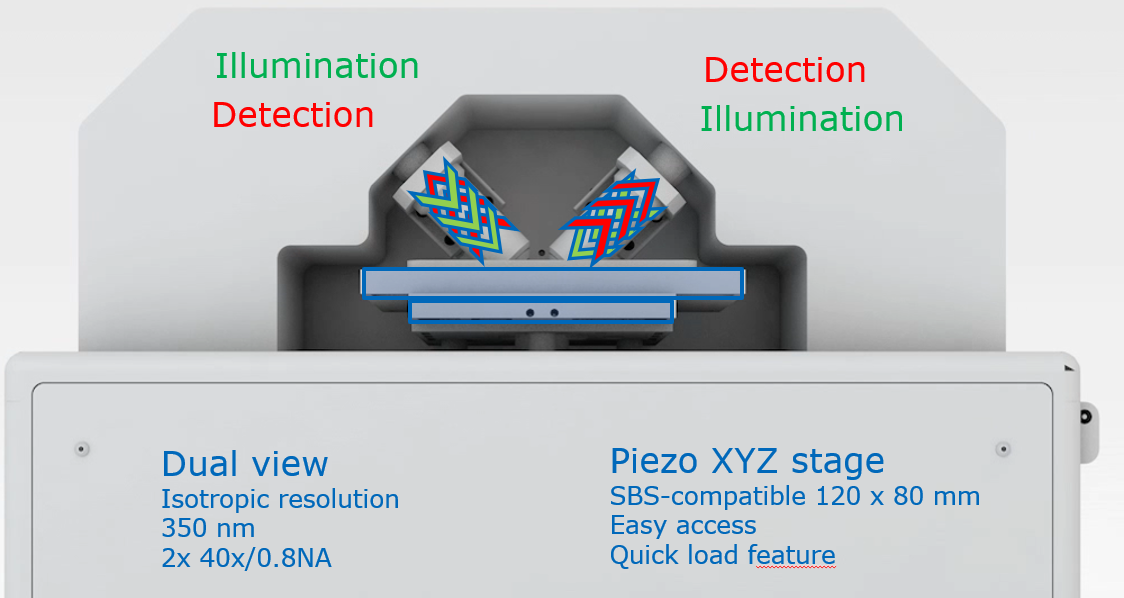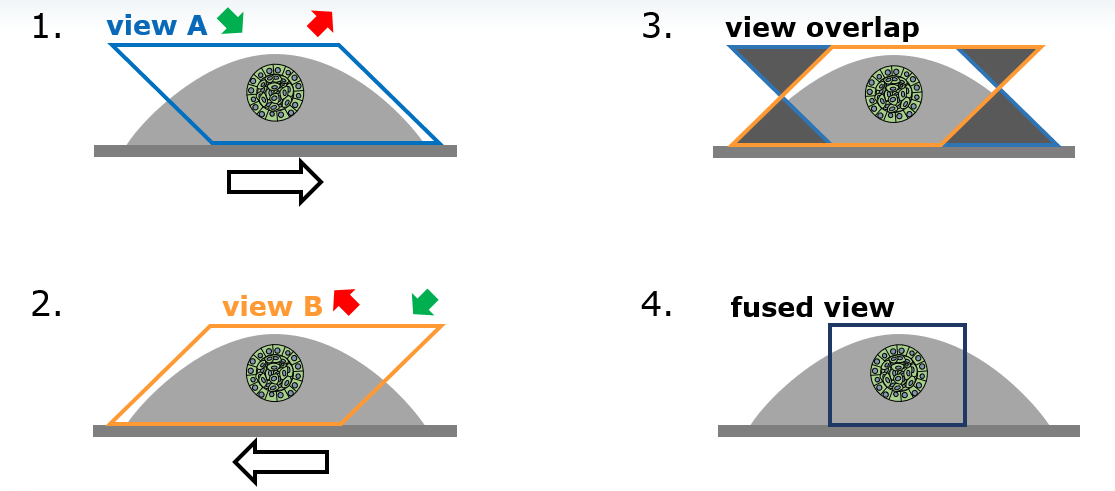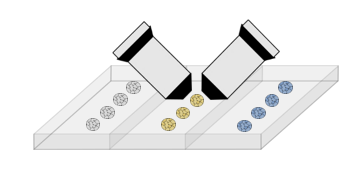Dedicated to live imaging with higher throughput, the QuVi SPIM combines dual views and dual detection channels for long-term 3D fluorescence imaging of living specimens. The upright concept enables screening approaches and dish-based cell assays.

Experimental excellence
The QuVi SPIM combines easy accessibility with high throughput and well-controlled sample conditions, e.g. to perform screening experiments or biophysical methods such as FLIM and FCS.

Sample stage
* High-precision XYZ stage
* Unique quick-load feature, SBS plate compatible
* Easy access from above for sample mounting, injections, etc.
* Environmental control unit is optinally available, featuring precise control of temperature (range 20?37°C), humidity, O2 and CO2

Device design
The QuVi SPIM's compact, vibration-free and robust design provides maximal stability during your long-term experiments.
Tailored to fit your lab bench, this class 1 laser system does not require any air table or vibration compensation mechanism as all moving components are light-weighted and balanced with the motor technology.
Maximal stability of focus and thermal conditions are also guaranteed.
The proprietary piezo crawler stages ensure longevity and precision for a permanently accurate specimen positioning. Neither the images nor the natural growth behaviour of your sample are affected by the gentle image recording.
Illumination and detection
The QuVi SPIM can achieve a resolution close to 340 nm in 3D, enabling life imaging, free of phototoxic effects.
The QuVi features a dual-side alternating illumination/detection concept and provides two orthogonal views of the sample.
The illumination optics comprise light-sheet generation by scanning a beam after passing a beam shaper unit for length and diameter adjustment.
Two Nikon 40x 0.8 NA water immersion objective lenses alternatingly project two orthogonal light-sheets on the sample.
The expandable and upgradable illumination setup allows a range of up to six lasers.
The alignment-free light-source offers 40mW power output for each line. For detection, the same objective lenses are used.
Illumination | Detection |
Effective Magnification | Field of View |
Pixel size |
Optical Resolution |
40X/0.8 NA |
40X/0.8 NA |
40X | 330 ?m |
160 nm |
340 nm |
The two spectral detection channels equipped with 10 position high-speed filter wheels and a dichroic mirror changer enable simultaneous dual channel imaging.
In addition, more than two channels can be acquired sequentially.
The robust sCMOS Orca Flash 4.0 V3 cameras from Hamamatsu are well-suited for experiments that demand high detection, quantification and speed efficiency.
Compared to other techniques (e.g. confocal laser scanning and spinning disc microscopy) more time points can be acquired for a deeper insight into dynamic biological processes and fast movement tracking while avoiding photodamaging effects, the downside of increased illumination in those techniques.
Laser combiner
* Maximum of 6 laser wavelengths (405, 445, 488, 515, 532, 561, 594, 642, and 685 nm with 40 mW each before fiber)
* Fast modulation (MHz range) and high extinction ratio
Illumination optics
* Chromatic correction from 440 to 660 nm
* Light-sheet generation by beam scanning
* Flexible light-sheet thickness (2 ?m to 6 ?m)
* Two Nikon CFI Apo 40x W 0.8 NA NIR water immersion objective lens
Detection optics
* Two Nikon CFI Apo 40x W 0.8 NA NIR water immersion objective lens
* 3rd objective lens CFI Plan Achromat 4x 0.1 Air
* Dual-side alternating illumination/detection concept
* 2 spectral detection channels, each equipped with a fast filter wheel (10 positions and 50 ms switching time between adjacent positions)
* Filters adapted to the selected laser lines
* 2 high-speed sCMOS cameras Hamamatsu Orca Flash 4.0 V3
* Maximum frame rate >80 fps at full frame (2048 × 2048 pixels of 6.5 ?m × 6.5 ?m size) and up to 500 fps at subframe cropping
* Peak quantum efficiency (QE): 82% @ 560 nm
* 3rd detection path equipped with a Grasshopper3 5.0MP camera for transmitted light detection
Electronics, microscope control and computer
LUXENDO's browser-based user interface offers a simple setup and execution of multidimensional experiments, while real-time control is handled by an embedded controller to ensure microsecond precision timing independent of the PC’s performance fluctuations.
Precise timing control of all connected devices is a prerequisite for reliable experimental outcomes. Full control of data streaming to storage as well as GPU-supported image processing further complements the overall performance.
| 제품소재 | 상품페이지 참고 |
|---|---|
| 색상 | 상품페이지 참고 |
| 치수 | 상품페이지 참고 |
| 제조자 | 상품페이지 참고 |
| 세탁방법 및 취급시 주의사항 | 상품페이지 참고 |
| 제조연월 | 상품페이지 참고 |
| 품질보증기준 | 상품페이지 참고 |
| A/S 책임자와 전화번호 | 상품페이지 참고 |
사용후기가 없습니다.
상품문의가 없습니다.
등록된 상품이 없습니다.